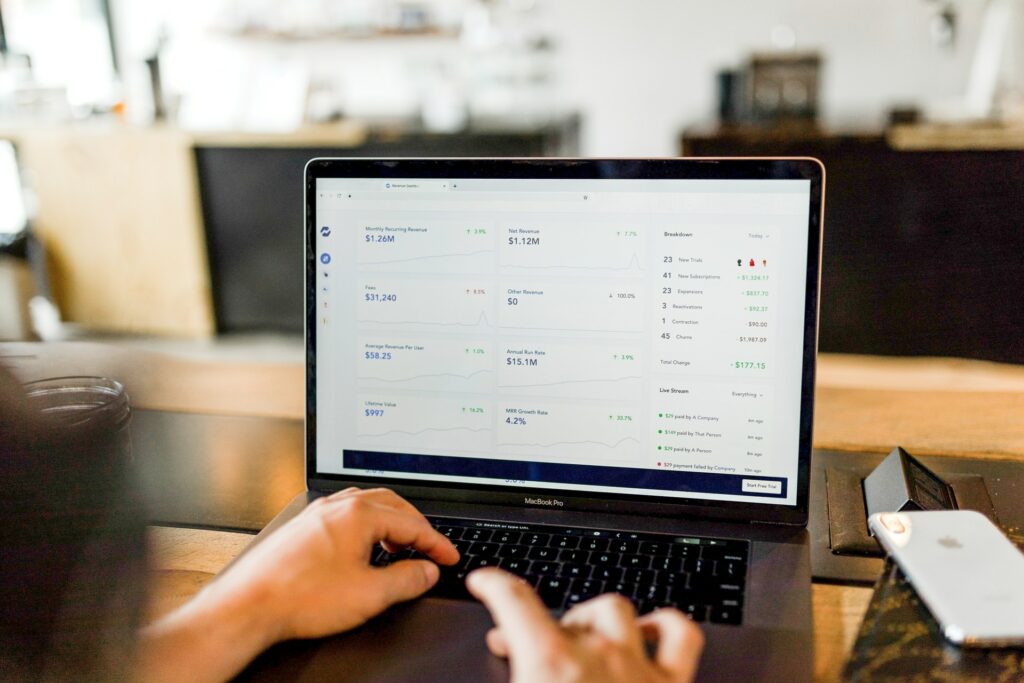Efficient accounting for restaurants is one of the key aspects of making your business successful. Considering the profit margins in restaurants are slim, it is crucial to keep a watchful eye on the bookkeeping process.
Accounting for restaurants is certainly not the most glamorous part of running a restaurant. However, without proper accounting for restaurants, it is impossible to control your finances and keep your restaurant in business.
Accounting for restaurants includes everything from accurately recording transactions to creating detailed financial reports. When done correctly, it allows you to analyze and optimize financial performance and profitability.
Consequently, anyone and everyone on your team responsible for your restaurant’s profitability must master the basics of a restaurant account.
What Is Restaurant Accounting?

Photo by Sarah Shaffer on Unsplash
Restaurant accounting is the process of recording, analyzing, and interpreting financial data for a restaurant. Although used interchangeably with restaurant accounting, restaurant bookkeeping may refer only to recording transactions in the general ledger.
A restaurant account’s responsibility typically includes the following tasks:
- Recording transactions in the general ledger. It is the master document for capturing financial transactions.
- Accurately categorizing those transactions, particularly expenses
- Analyzing ledger and journal entries
- Accounts payable (i.e., processing invoices, bills, and paying vendors)
- Bank statement reconciliation
- Creating financial statements to plan financial health, including the balance sheet, income statement, and cash flow statement
- Establishing, and tracking budgets, benchmark KPIs, and COGS [Cost of goods sold]
- Completing tax returns & providing tax advice and assistance
- Offering financial insights and advice
- Auditing
How to Do Bookkeeping for a Restaurant

Photo by Austin Distel on Unsplash
Setting Up Your Books
- Find the Ideal Bookkeeper
As an owner, you are well aware of the challenges of running a restaurant, such as dealing with staff, inventory management, and controlling the cost of goods sold.
Therefore, it is essential to find a bookkeeper who understands the quirks of the food and beverage industry, both front-of-the-house operations and back-of-the-house management.
- Use an Accounting Software
Choose an accounting software to ease your data entry tasks, create customized invoices, create regular profit and loss statements, track your revenue, and review cash flow.
Further, an ideal bookkeeping software for restaurants should offer robust reporting features and be easy to use.
- Set Up the Chart of Accounts
The next step is to set up your chart of accounts that is used to categorize the money coming in and out of your business. A standard chart of accounts includes assets, expenses, liabilities, revenue, and owner’s equity.
Further, this is broken down into business-specific categories such as inventory, sales, and marketing. While you set up the chart of accounts, it is necessary to decide the metrics you want to monitor.
- Choose a POS System
Whether you are running a small bakery or a fine dining restaurant, you would need a POS [Point of Sale] system for cash management, sending receipts via text or mail, order management, inventory management, and back-office reporting.
You need to choose a system that is easy to use for employees and customers and integrates with your accounting software.
What Do You Need to Track?
Payroll
Payroll in the restaurant industry can be complex as the process of tracking employee hours is complicated. Moreover, multiple wages and staff positions are the norms in the restaurant industry, and the ability to accommodate different rates is the key.
With irregular work hours, multiple positions, and different types of pay, calculating restaurant payroll can be a headache. Therefore, it is best to outsource the payroll services to a nearby accounting agency.
Accounts Payable
Paying bills on time and keeping your suppliers happy are crucial for the effective functioning of your restaurant. The accounts payable represents the amount you owe the suppliers.
Once you get invoices, update them on the accounting software. This will help you to keep track of the payment schedule.
Inventory
Based on the size of the restaurant, you should set up an inventory management system that optimizes food costs and reduces waste. Further, the inventory helps you avoid food shortages and surpluses.
You can track your consumables and supplies by calculating the value of the food you have in stock and ascertaining the average daily inventory costs.
Cash Management
Monitoring your cash flow relegates to the amount of cash going out versus the amount of cash coming into your business on a daily, weekly, and monthly basis.
Sales
Keeping track of your revenue is essential in restaurant bookkeeping. You can use the accounting records on hand to show how much you earn from food sales, merchandise sales, or catering jobs.
Also, find out how much revenue you make each day and ideally break them into food and beverage categories.
Reconciliation
You need to reconcile all of your accounts, including bank accounts, credit cards, loans, lines of credit, and even your payroll liabilities. Besides, reconciling will ensure that you have accounted for everything.
Hire Professionals for Accounting for Restaurants

Photo by Cytonn Photography on Unsplash
Payroll laws and taxes are constantly changing, so starting in compliance with local, federal, state, and workforce requirements can be a full-time job. Moreover, if mistakes are made in withholding or payment, penalties and interests can be substantial.
Consequently, it is better to let trained, experienced professionals, handle your restaurant’s accounting needs so that you don’t have to stay on top of all those complicated changes.
Now ask yourself, “What else could I do with that time?” There’s no doubt, many more important things you could be doing to make your restaurant business more profitable. The relatively small cost of hiring a professional accounting company is more than offset by the time you save and the stress you do away with.



